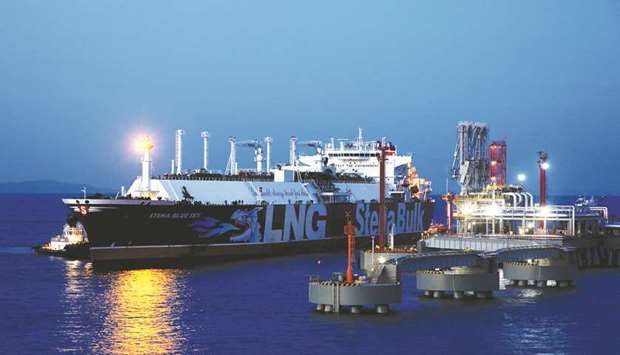Singapore — A prolonged period of low LNG prices is keeping Asian buyers from committing to offtake agreements to meet future gas demand, which means that many new investment-starved gas projects may not see the light of day.
Traditional projects need committed buyers for their gas, before they can proceed to a final investment decision. As buyers remain on the fence,
LNG projects are starting to fall behind deadlines and some risk being cancelled outright.
The exceptions are some big-ticket projects backed by investors with deep pockets, such as the expansion of Qatar’s mega-trains by the middle of the next decade and the Qatar-backed Golden Pass LNG project in the US.
“We expect several further FIDs to be taken in 2019. But this is a race with clear frontrunners, and the finish line is well in sight,” S&P Global Platts Analytics said in its 2019 outlook report. “LNG buyers remain reluctant to sign long-term contracts, and hence project developers that are able to finance a project without firm offtake agreements seem to be in the driving seat,” it said.
This means that projects with unconventional business models are more likely to push forward, like LNG Canada, a Shell-operated LNG project in western Canada, where equity owners are Asian national oil companies, who will off take the gas produced.
Another option has been to sign up with commodity trading houses and portfolio players. For 2018, Gunvor delivered around 11 million mt of LNG — the equivalent of 176 shipments, while Trafigura traded roughly 9.9 million mt of LNG in the same year, according to company and regulatory data.
KICKING THE CAN DOWN THE ROAD
Depressed LNG prices are a major reason for the lack of urgency among buyers. Spot Northeast Asia LNG prices this winter failed to hit their seasonal peak.
The Platts JKM for April delivery cargoes was assessed at $6.025/MMBtu on Friday, the lowest in 18 months and the market was still struggling to find a bottom.
“It’s really hard to sell your umbrella when it’s sunny outside,” Texas LNG’s chief executive Vivek Chandra said at the LNGgc conference in Singapore last week. Texas LNG is awaiting FID for a 4 million mt/year export terminal in south Texas in two phases.
“Right now you’re sitting in the situation where JKM is six bucks and the traders are calling you every day saying–‘take my ship take my ship.’ And you’re thinking, there’s a lot of food in the buffet. I’ll wait,” Chandra said.
LNG markets are expected to see record supply in 2019, with the glut lasting until the early years of the next decade, after which a projected tightening could lead to higher prices. Platts Analytics expected JKM to bottom out in 2020 and 2021 at $7.43/MMBtu and $8.04/MMBtu, respectively.
Bernstein Research projects that LNG supply growth is likely to fall off a cliff post-2020 due to a paucity in new project approval, and requiring at least 50 million mt/year of new capacity to be approved over the next two years to avoid a deficit.
Uncontracted demand by the world’s seven largest LNG buyers — CNOOC, CPC, JERA, KOGAS, PetroChina, Sinopec and Tokyo Gas — could quadruple to 80 million mt/year by 2030, according to Wood Mackenzie’s research director Nicholas Browne. These suppliers together account for more than 50% of the global LNG market.
TANGLED IN TRADE WAR
Some of the most vulnerable are part of the so called “second wave” of US LNG projects, with exposure to Asian consumers, mainly China.
Their predicament has been complicated by the trade war.
Chinese buyers were unofficially barred from signing long-term agreements with US LNG projects, according to an executive who was part of the Trump administration’s trade delegation to Beijing in 2018.
Before the imposition of the 10% retaliatory tariff on US LNG, China was taking nearly 15% of US LNG cargoes. After the tariffs in November, only three or four have reached China.
China spent the last four months swapping US-origin cargoes with non-US cargoes, Tullet Prebon’s head of LNG Asia Tobias Davis said at the conference.
Last week, officials said they were ready to shut the $43 billion Alaska LNG project for exporting North Slope gas if customers did not show up.
“All American projects are not getting traction in Asia,” Texas LNG’s Chandra said.
Like other US second-wave projects, Texas LNG has several memorandum of understanding with Chinese customers that have not materialized.
It is unclear if an upcoming US-China trade deal will fully resolve the impasse between the countries.
The prospects of US LNG for Asian customers are further complicated by the long shipping distance, recent volatility in freight costs, the Panama Canal nearing full capacity and competition from Russian pipeline gas in China.



